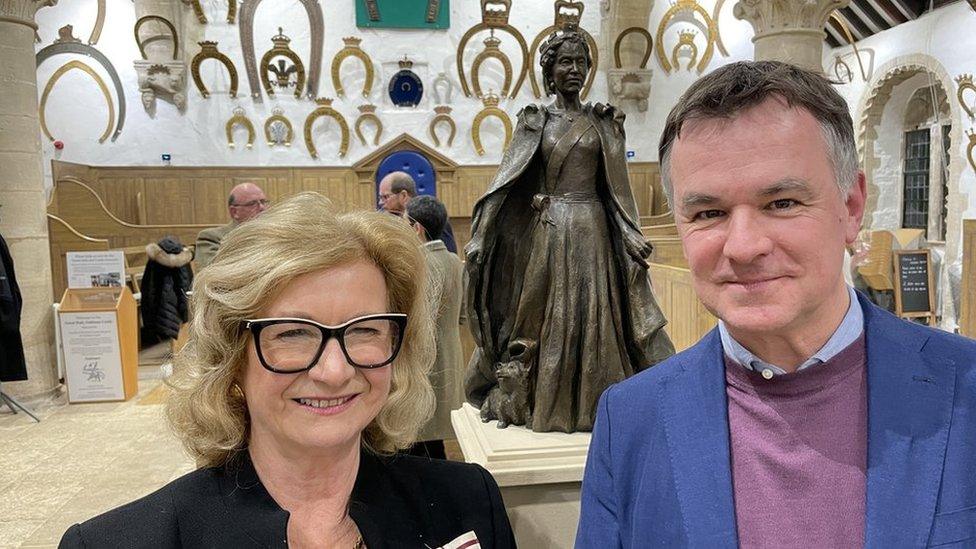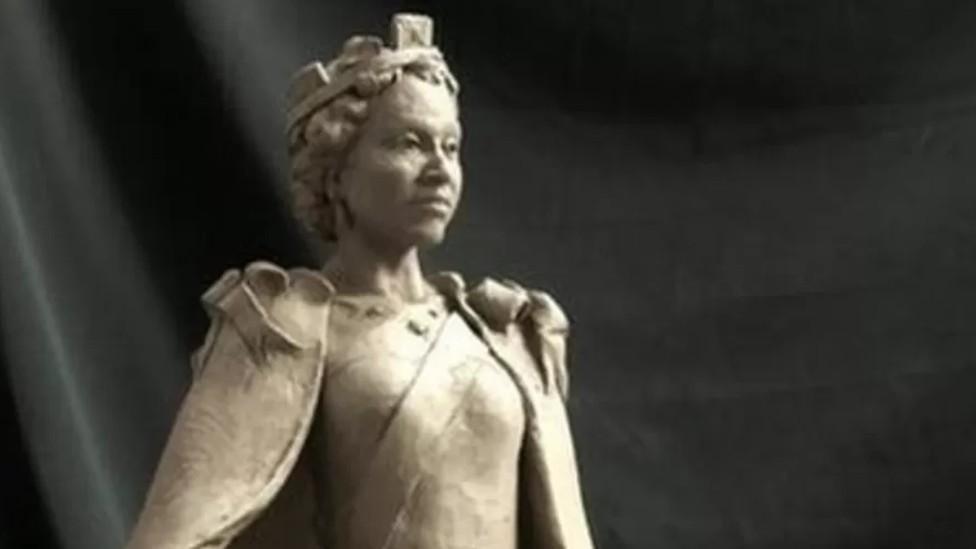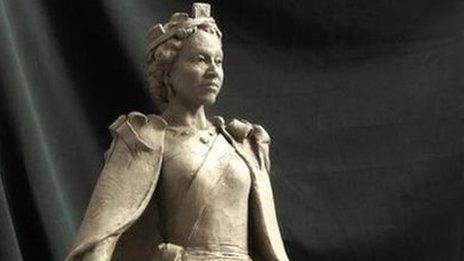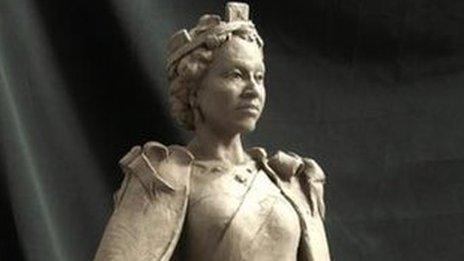Rutland sculptor starts next stage of Queen Elizabeth II statue
- Published

Lord Lieutenant of Rutland, Dr Sarah Furness (left), and sculptor Hywel Pratley with the statue
A statue of the late Queen Elizabeth II, believed to be England's first permanent memorial to the monarch, is in its next stage of production.
The 7ft (2.1m) bronze statue will be placed outside Oakham Library after it was commissioned by Lord Lieutenant of Rutland, Dr Sarah Furness.
Sculptor Hywel Pratley said he had worked with clay to create a young Queen in the 1950s or early 1960s.
He added he had finished sculpting with clay, which was an "exciting" phase.
Queen Elizabeth II's death, at the age of 96 on 8 September, followed the longest reign of any British monarch.
There will be no official public event to mark the first anniversary of the late monarch's death.
Last month, Rutland County Council gave permission for the £125,000 statue, which will be paid for almost completely with public funds, the Local Democracy Reporting Service said.
Mr Pratley said he had used 800kg (126 stone) of clay in the four months he had worked on the project.
"I wanted to sculpt a young Queen, dressed in robes befitting our monarch," he said.
"The likeness is not of any specific moment during Her Majesty's reign, but I would say a young Queen Elizabeth in the late 1950s or early 1960s."

The sculptor said he had used 800kg of clay as part of the project
The sculptor is now to begin silicone moulding.
As many as four layers of silicone are poured over the statue, one after another, with each successive mixture thicker than the last, to eventually produce a thick, malleable, exact copy of the clay model.
"Once the silicone goes on, that means there is no more 'tweaking' of the clay - so it's a very exciting time in the project, if a little bit nerve-wracking," Mr Pratley added.
Bronze will eventually be poured into a mould, which is created from the clay form.

Follow BBC East Midlands on Facebook, external, Twitter, external, or Instagram, external. Send your story ideas to eastmidsnews@bbc.co.uk.
Related topics
- Published4 August 2023

- Published15 April 2023

- Published7 March 2023
